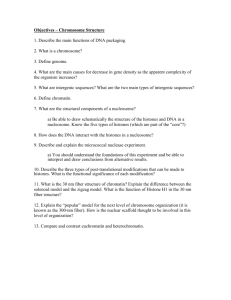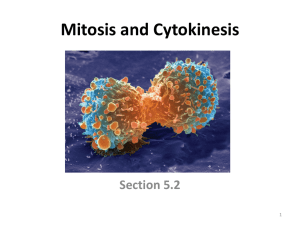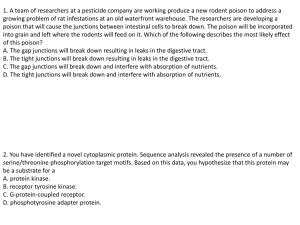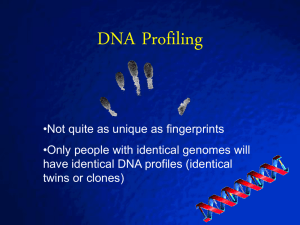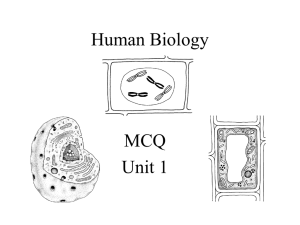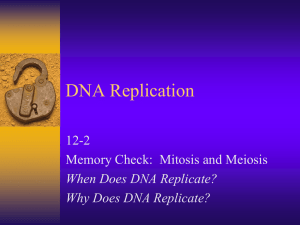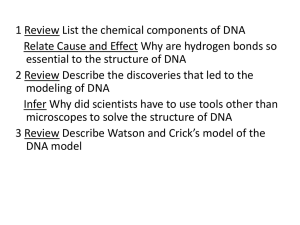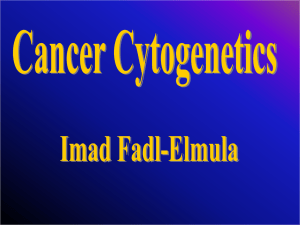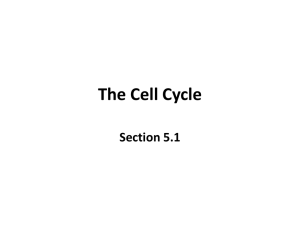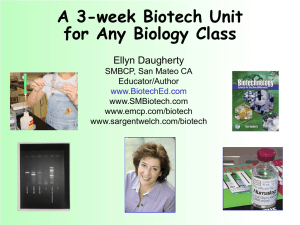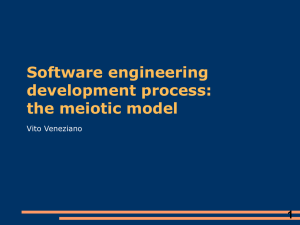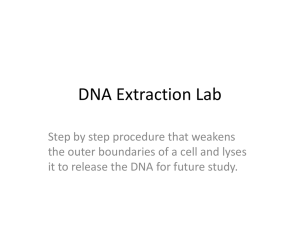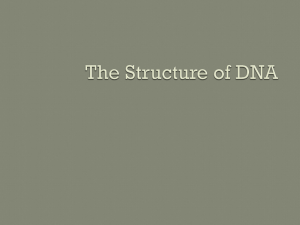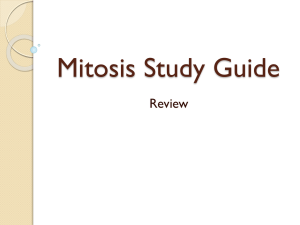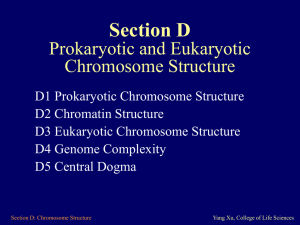Chapter 10 Cell Growth and Division
advertisement
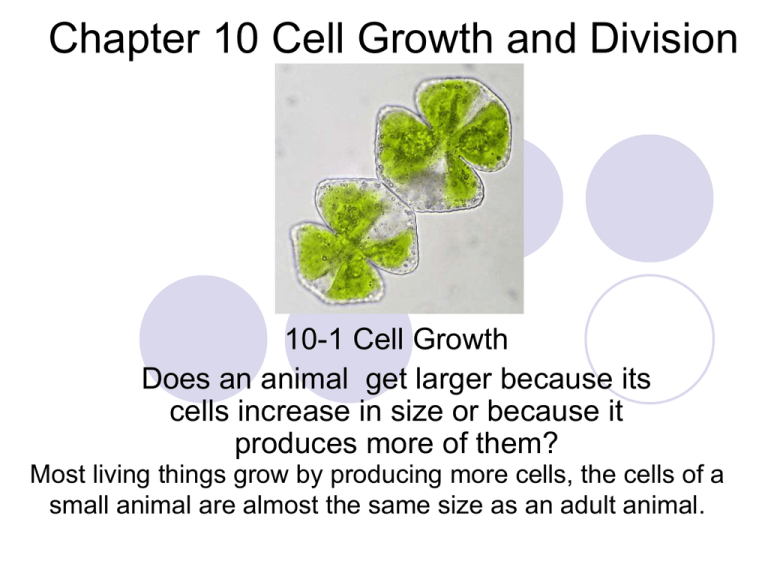
Chapter 10 Cell Growth and Division 10-1 Cell Growth Does an animal get larger because its cells increase in size or because it produces more of them? Most living things grow by producing more cells, the cells of a small animal are almost the same size as an adult animal. They both have the same size cells! 2 reasons cell divides: (don’t write anything yet) -The larger the cell becomes the more demands the cell places on its DNA (DNA overload) -The more trouble the cell has moving enough nutrients and wastes across the cell membrane. (Membrane traffic jams) 1. DNA “Overload” DNA stores the info that controls cells fxn. 1000 books 1000 books As the cell size increases it does not make more DNA for the cell. If the cell were to grow without limit, an information crisis would occur. Compare this to a small town with a library… 2. Exchanging Materials Food, oxygen and water enter through a cell membrane and wastes leave the cell in the same way. The rate of exchange depends on the surface area of the cell. Surface area = total area of its cell membrane The rate at which food and O2 are used up and waste products are produced depends on the cell’s volume. Ratio of Surface Area to Volume To obtain the ratio: divide the surface area by the volume Surface area/volume= ratio Volume = length x width x height So a 1 cm cell would be: 1 x 1 x 1 = 1cm3 S.A. = length x width x # of sides So a 1 cm cell would be: 1 x 1 x 6 = 6 cm2 In this case, the S.A. to vol. ratio would be 6:1 Ratio of Surface Area to Volume The volume increases much more rapidly than the surface area, causing the ratio to decrease Think of the town: The small town has one, two-lane main street. As the number of people increase the size of the street remains the same. The people encounter more traffic and traffic jams occur. The cell experiences the same thing . As it grows it is harder to move materials into and out of the cell. That is why cells do not grow very big. Why do we need more cells? 1. To grow/get bigger 2. To repair/heal a wound 3. To replace dead cells (G.I. tract, skin) Cell Division Before it gets too large to cause “traffic” problems the cell divides into 2 daughter cells. Before division the cell replicates its DNA so that each cell receives its own identical “library” Chromotin Chromotin is the form that DNA is in most of the time in a cell. It is loose and unorganized. Chromosomes A chromosome is the form that DNA is in before a cell divides. It is X shaped and organized. If the DNA is not organized it cannot be equally divided between the two new cells. Chromatids Chromatids are half of the chromosome X. Each pair of chromatids contains identical DNA. They are known as “sister chromatids” Chromatids The sister chromatids are identical so that each new “daughter cell” gets a copy of the same DNA. Centromere A centromere holds the two sister chromatids together like a belt. Histones Histones Histones are disk shaped proteins that help to organize the DNA within the chromosome. Let’s review! 1. What are two reasons why a cell would divide? 2. What is a chromosome? What does it contain and where can it be found? 3. What is the difference between a chromosome and chromotin?
